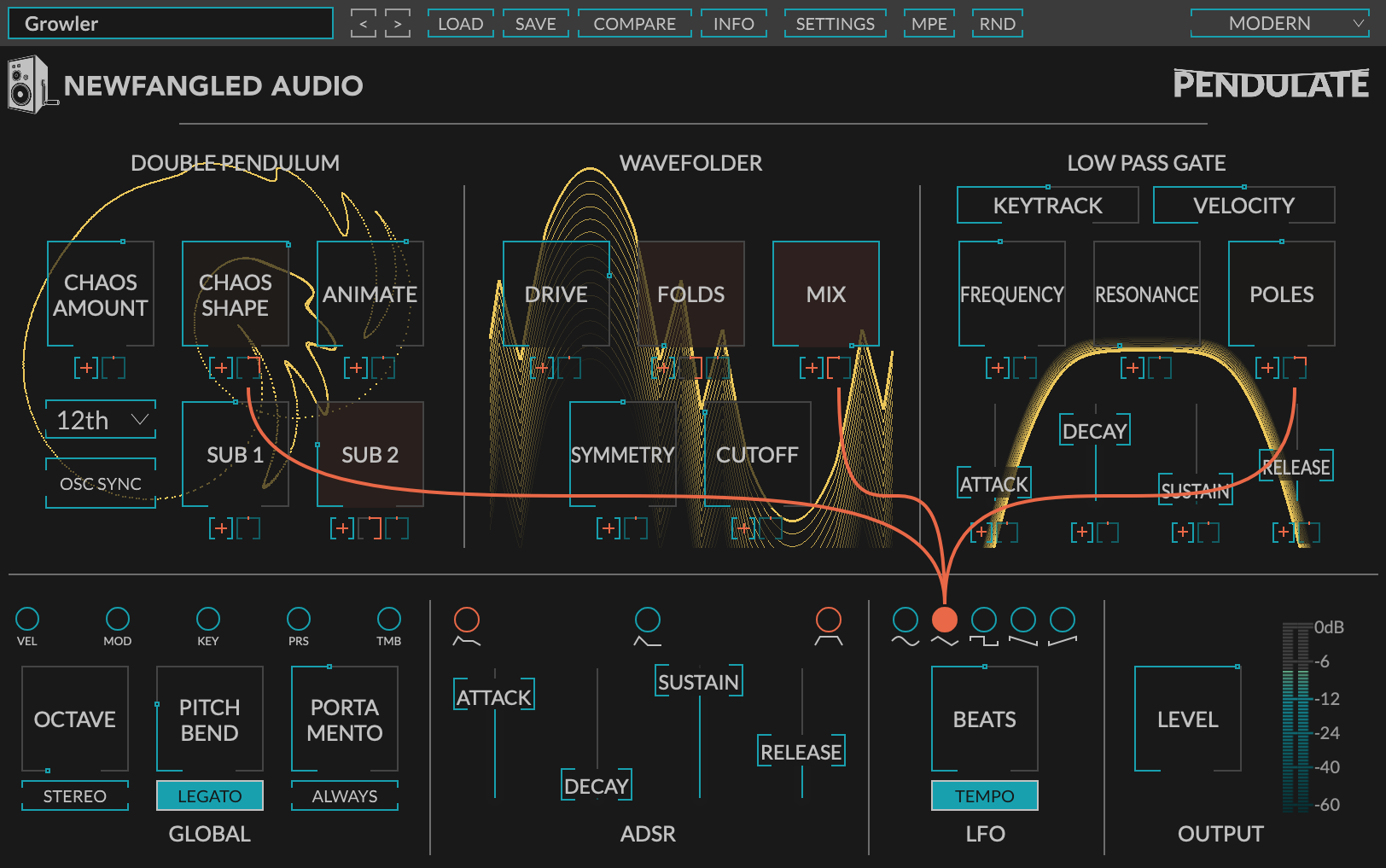What is this MPE “polyphonic expression” about? Well, you can get your hands all over the vintage test tone goodness of Fundamental, and a bunch of synths will be easier to control in Ableton Live 11 out of the box. Let’s explain.
MPE still seems widely misunderstood. It’s not going to instantly unlock some kind of new performance. It’s just about making a connection between your fingers and the sound that makes sense when you’re using more than one finger at a time. That’s it. The clue is even in the name – polyphonic expression.
The conventional scheme by contrast is less intuitive, unless you’re an organist or something. Velocity in MIDI is per-note – otherwise if you hit a chord with your thumb harder, all the other notes would sound louder, for instance. But most aftertouch and other controllers aren’t. That means if you’re playing with more than one finger, you still only have one big expression message for everything. Hence MPE: polyphonic rather than monophonic expression.
MPE isn’t really something you can easily demonstrate, because the advantage is really something you feel when you’re playing.
Ableton Live 11 adds per-note expression, following in the footsteps of tools like Cubase, and it’s a really great, easy implementation. It’ll be something you might use even without a controller, because it also supports per-note editing.
What you play with your fingers is up to you. So here’s Fundamental, the wild test-tone oscillation instrument created by sonicLAB and Hainbach, with its MPE support:
And note the Sensel controller with Buchla Thunder overlay.
What excites me is how many instruments will just work out of the box, because that means more time to try actually playing without having to stop and configure stuff.
In fact, quietly tucked into a recent beta release, the following instruments will work natively with MPE right out of the box. This means those of you getting Live 11 next week will see that – and if you have a different MPE host of choice, you should also consider checking out these tools:
- Audio Damage Continua
- Audio Damage Phosphor 3
- Cherry Audio DCO-106
- Newfangled Audio Pendulate
- TAL Software TAL-J-8
Pendulate is even free, so go get it!
(There are many other MPE-supporting tools, too – these are just the latest additions with Live 11 support by default.)


But yeah, notice not one but two emulations of classic Roland synths (the JUNO-106 and Jupiter-8). Those are instruments that historically had polyphony, but didn’t have anything like MPE until now. But since they did have multiple voices, there’s no reason that this shouldn’t make sense. It just gives you a finer degree of per-note control – akin roughly to what you’d have if you had a 6- or 8-part ensemble of acoustic instruments playing expression, for example.
Those are all great, great synths by the way, and another sign of the breadth and depth of instruments you can get on a computer.
(Hey, speaking of Roland, uh Roland Cloud – this is MIDI, the format you helped launch originally, so would be great to see MPE support there, too. Someday?)
You can get those excellent Audio Damage synths bundled with your Sensel Morph. And that deal is a pretty terrific value, not something you would quickly exhaust.
As far as Live 11 goes, you’ll also have internal Device support, plus you can instantiate Instrument Racks with MPE support, and there’s the MPE Control device which lets you assign to other parameters. That last one means you could take something like the Sensel’s Buchla layout, which is ideally suited to control applications, and use it to manipulate effects – even without those effects necessarily being built with MPE support themselves.
If you’re saying “but isn’t that just like having ten fingers on ten faders at once?” – you’re absolutely right. But that’s the point, and why I think some folks may have slightly overthought this whole business from the start.
Also – Live will configure itself for VST2 and AU plug-ins that self-identify with MPE support. That is apparently not so many plug-ins, so if you’re a plug-in developer and you’re reading this, this one’s for you.
Anyway, while we await Live 11 release date, here are some videos on how the whole thing works.
“But I don’t have an MPE controller!“
It’s “Expression,” not technically MPE, but you do benefit from the new edit and control features with Ableton Push, as well: